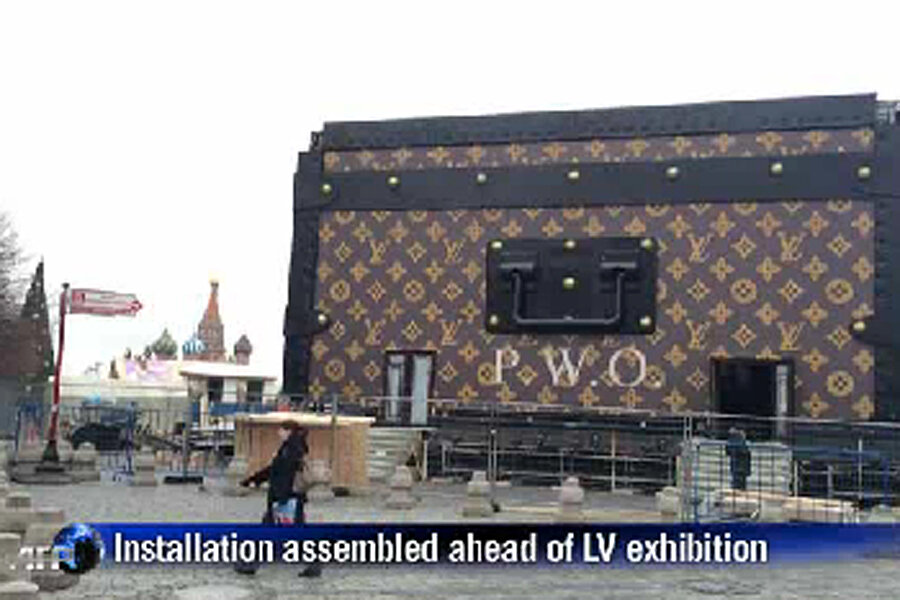Move over, Lenin: Louis Vuitton 'trunk' occupies Red Square
Loading...
| Moscow
It could almost be a plot line from a story by surrealist 19th century Russian author Nikolai Gogol.
Visitors to Red Square in the past few days have found themselves confronted by a giant Louis Vuitton trunk, seemingly perfect in every detail and so big that it dominates Moscow's most iconic space and almost blots out other familiar features such as Lenin's tomb, St. Basil's cathedral, and the Spassky Tower.
And, like the bizarre oddities that crop up in Mr. Gogol's slightly absurd but profoundly perceptive tales, like The Nose and The Overcoat, the trunk has already prompted a great deal of consternation, confusion, indignation, and controversy.
The huge structure – some 100 feet long and 30 feet tall – is actually a replica of a Louis Vuitton trunk supplied a century ago to Russian Prince Vladimir Orlov, a member of the Czar's family. It's meant to house an exhibition of Vuitton luggage down through the ages that will run for most of December and January. Vuitton has a shop in Red Square's famous GUM department store, but no one is quite sure who authorized it to build the giant pavilion.
"Red Square is the sacred heart of the Russian state. There are some symbols that should not be trivialized or besmirched," raged Communist Party parliamentarian Sergei Obukhov, according to Russian news media.
"I am amazed that the presidential administration and the Federal Guard Service, both of which control the territory of Red Square, have permitted this outlandish display," Mr. Obukhov said.
Alexander Sidyakin, a Duma deputy with the pro-Kremlin United Russia party, says he's lodged a complaint with Russia's anti-trust watchdog, asking it to look into whether the gargantuan suitcase violates legislation limiting the size and location of advertisements.
"This surely violates the law on advertising. It's definitely contrary to all our understandings of what is possible, and what is not, on the territory of Red Square," Mr. Sidyakin says.
"Just think, this box is supposed to sit there on Red Square until mid-January! People will come for traditional New Year celebrations, and they won't be able to see St. Basil's or the Spassky Tower because this enormous suitcase is squatting there, blocking out everything.... Also, this brand is a symbol of luxury. They really should have placed it somewhere else, if they had to build it. Not here, not now, and not for such a long time," he says.
Some Russian bloggers have already started having fun with the situation. One photoshopped image that's showing up on Russian social media – and is sure to infuriate Russia's still-numerous communists – shows Louis Vuitton's iconic livery cleverly transposed onto the mausoleum of Soviet founder Vladimir Lenin.
Louis Vuitton is promoting the upcoming exhibit as "a reflection of peoples' lives, their physical and poetic journeys."
But the company has yet to officially respond to the controversy their humongous trunk has set off among Muscovites.








